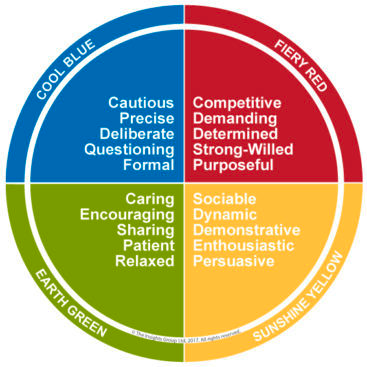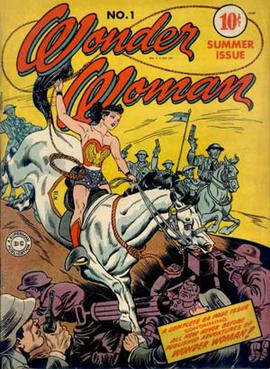The origins of DISC
5 min read
Insights Discovery® is a psychometric tool “built to help people understand themselves, understand others, and make the most of the relationships that affect them in the workplace”. Basically, you complete a questionnaire and based on your responses you will get different values on four categories that you can compare with other people.
When I took my training on Insights®, it reminded me of another tool I used in the past, DISC®, and you will understand why.
The images below are the usual representation of Insights® (on the left) and DISC® (on the right).


You may have noticed that the same set of colours are used and the wording used to describe each of them is very similar.
- Red is demanding, dominant, strong-willed.
- Blue is more rational, cautious, formal, conscientious.
- Yellow is more sociable, persuasive, influential.
- Green is caring, steady, patient.
One circle is rotated with respect to the other, and in Insights® there are elements added to the colours: fiery red, cool blue, sunshine yellow and earth green. It can be a coincidence, and the selection of colours may be the best option to help our memory (it reminds me of the Spanish game of parchís). To my eyes, both are very similar.
Insights® is based on Carl Jung personality theory [1] while DISC® is the result of the theories of an interesting individual: William Marston.
The invention of DISC was not alone
William Moulton Marston was an American psychologist who came with the DISC theory while he was working at Columbia University around 1928. The original terms he used for the traits where: Dominance, Inducement, Submission, and Compliance.
Marston was married to another professor at the University, Elizabeth Holloway Marston, and together they created a device that could connect measurements of blood pressure and emotion: they invented the lie detector, the polygraph.

But the personal life of Professor Marston is even more interesting. While he was married, he started a relationship with a student, Olive Byrne, and his wife, far from taking that as an offence, accepted and the three of them started living together.
Their relationship was a scandal at the University. He was fired and they had to move to another city. No University wanted to hire him and he thought he could get some money creating scripts for comic books. Under the pen name of Charles Moulton he created the character Wonder Woman.

Wonder Woman included his feminist ideals and some references to bondage. The character uses a magic lasso that forces people to tell the truth, a reference to the lie detector.
Their polyamorous relationship was not just an adventure. Marston had two children with each women and they lived together until the end of their lives. Marston died of cancer at the age of 54 and Elisabeth and Olive continued living together. Olive died in 1990, aged 86 and Elisabeth in 1993, aged 100.
The story
I have spoiled it, but this is the basis of the movie Professor Marston and the Wonder Women (Angela Robinson, 2017) available on streaming platforms. An interesting movie that some descendants of the Marstons have criticised saying that elements of the film are not based on reality and the family was never consulted.
True or false, connected to Insights® or not, Marston’s story was so good I thought it deserved to be shared.
Toni Tassani — 18 April 2022
This article was originally published on 8 March 2021 on the company intranet.
Lie detector image from the William Moulton Marston Wikipedia page.↩︎
Wonder Woman 1 image from the DC Comics Database.↩︎